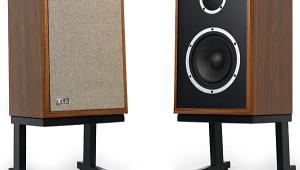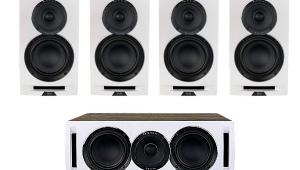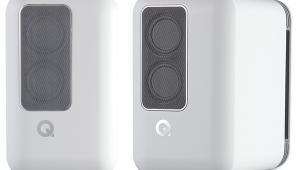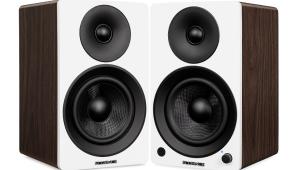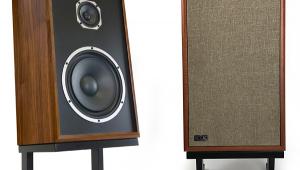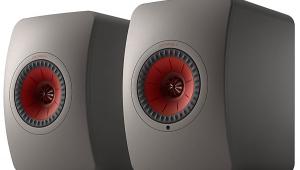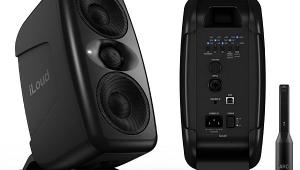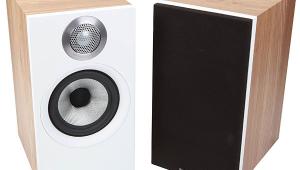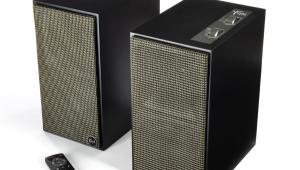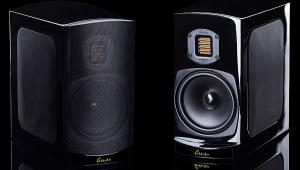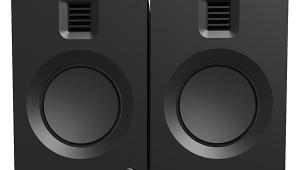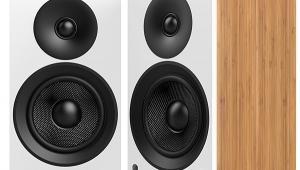RSL 5.1 Theater Speaker System

Longtime readers know I often revisit the same manufacturers in loudspeaker reviews. I like to see how speaker lines from the same crucible evolve and grow. The downside is that returning to the same brands cheats me (and you) of new experiences. So for this review, I found myself placing a call to Howard Rodgers of RSL Speaker Systems. I dialed his West Coast number at 10 in the morning East Coast time with the intention of leaving a voicemail—only to roust him out of bed, to my surprise and embarrassment. He told me a little about the company and the 5.1-channel speaker package I was about to review.
Rodgers has been an audiophile for 50 years, has been making speakers for 40 of them, and pioneered the practice of selling factory-direct. Rogersound Labs was born in 1970 in a small North Hollywood, California, shop that included both factory and showroom. The operation soon grew to a chain of eight stores that sold both RSL speakers and other audio/video products. Google the company, and you’ll find the Internet is full of people who bought RSL speakers and remember them fondly—and some of those old models are still in use. The founders sold the company in 1989, it was out of business by 1992, and Rodgers subsequently bought back the name. But it wasn’t until 2010 that some long-gestating product concepts lured him back into the speaker business.
It was home theater that inspired him. In the process of building a dedicated theater for his home—which he wrote about in our July 2010 issue—Rodgers developed prototypes for a new two-way, 4-inch speaker and complementary sub using what he calls his Compression Guide Technology (CGT). Satisfied with how his inventions were faring at home, he resolved to bring the RSL 5.1 Theater System to a wider audience.
Same Ingredients, Different Dishes
The current RSL lineup includes a monitor, an LCR, and a subwoofer—all reviewed here—plus in-wall and in-ceiling speakers. RSL’s 5.1 Theater Speaker System uses the CG4 monitor in the four corners of the soundfield, and the CG24 LCR serves as the center channel. In addition to this 5.1-channel package, RSL uses the same basic ingredients to form 7.2-channel, 7.1-channel, and 2.1-channel packages. For one-stop shopping convenience, the company’s Website includes OmniMount stands and mounts as well as a 12-gauge, $1/foot speaker cable. RSL offers a 30-day guarantee and free shipping. If you’re not satisfied and return the product, return shipping is also free. This company gives every sign that it believes in its products.
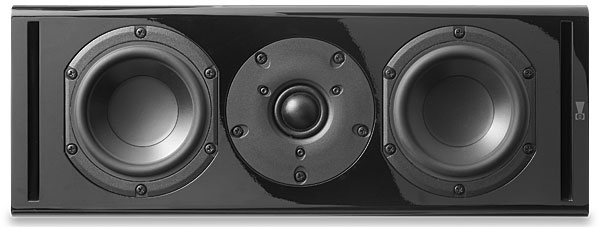
The CG4 monitor and CG24 LCR use the same 1-inch silk-dome tweeter and 4-inch polypropylene-coned woofer. This woofer has a cast-metal (as opposed to stamped metal or plastic) basket. The woofer is doubled in the LCR. There are gold hex-nut binding posts and OmniMount-size threaded inserts on the back of the gloss black enclosures. On the front are perforated metal grilles affixed with very powerful magnets—the grille practically flies out of your hand onto the baffle. The CG4 has a narrow slot-shaped port beneath the drivers, while the CG24 has a slot-shaped port on either side.
Compression Guide Technology is a big part of the RSL story. This train of thought began early in the company’s history when Rodgers noticed how most loudspeakers reproduced the sound of a kick drum with a sloppy boom as opposed to a tight, percussive impact. He concluded that the internal resonance in the cabinet necessary to load the woofer degraded its transient response. He examined and rejected conventional design options, including sealed and traditional vented enclosures. Transmission-line designs came closest to his goal of disciplined bass, but he ended up following his own muse with a version of what’s more generally referred to as a labyrinth enclosure. Here’s how he describes his solution:
“Compression Guide is a simple design that divides the enclosure into three areas of higher and two areas of lower compression with a diagonal board inside the enclosure that extends fully side to side (but not the full height). As the rear wave passes through these areas of varying volume and pressure, the audible effects of resonance are lessened. Eventually, the cabinet vents to the outside with a rectangular tuned passage, which is the same as a properly tuned bass reflex port.”

Have you noticed the CG4’s tweeter is on the bottom? Otherwise, says Rodgers, “the back of the woofer would be close to the diagonal Compression Guide board. Frequencies off the back of the woofer would reflect off the board and cause cancellation in the midrange, resulting in erratic response. It really doesn’t matter whether the user decides to position the speaker with the woofer on top or bottom, other than the fact that our logo would be upside down, which wouldn’t hurt our feelings too badly.” The logo is pretty subtle—probably no one would notice. (Nonetheless, our audio technical editor Mark J. Peterson reports that any asymmetrical loudspeaker will exhibit a different response in either direction off axis of the asymmetry, so it could matter if the listener isn’t seated directly on axis vertically.)
Rodgers says CGT brings three benefits, all of which he claims stem from the elimination of cabinet resonance. There’s less bass overhang, which makes for more detailed low frequencies and a better blend between speakers and sub. The boxy coloration in the midrange that afflicts so many speakers is minimized. The woofer’s transient response also improves, which improves overall imaging. Note that the crossover frequency is 2.5 kilohertz, which the small woofer is quite capable of operating up to. The manufacturer recommends a sub crossover of 90 to 100 hertz, partly to avoid the dominant system resonance in the speakers, specified at 72 Hz for the CG4 and 68 Hz for the CG24. I set the sub crossover at 100 Hz in my A/V receiver.
A 375-watt RMS Class AB amp powers the Speedwoofer 10 subwoofer’s front-firing 10-inch driver. The company bucked the trend somewhat in eschewing less costly Class D amplification. According to the background literature, “We tested many samples and found that no digital amplifier came close to the impact (we call it ‘slam’) of the Class AB amplifier we chose. So we spent the extra money.”
The Speedwoofer 10 is one of the few subwoofers to break out of the controls-on-back mindset. Both volume and crossover frequency are located in a separate box that plugs into the back of the sub with Cat-5 Ethernet cable. You can use either the two huge knobs on the box or a four-button remote. This allows greater flexibility in placement. No matter where in the room the sub goes, the controls won’t become inaccessible.
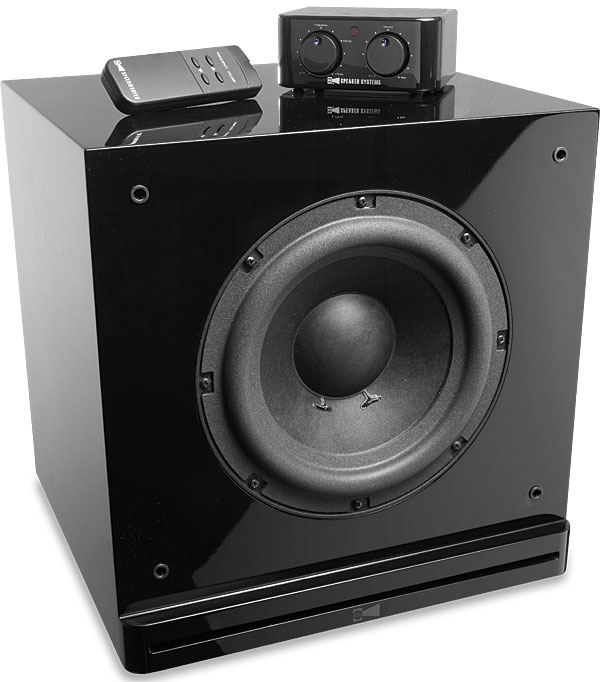
Associated equipment included a Rotel RSX-1550 A/V receiver, Oppo BDP-83SE universal disc player, Rega Planar 25 turntable, Shure M97xE cartridge, and Bellari VP530 vacuum tube phono preamp. All movie demos, as well as the first music demo, were on Blu-ray Discs with DTS-HD Master Audio soundtracks.
That’s My Story
The RSL CG4 and CG24 made a gratifying first impression that never wavered as they journeyed through content with the unflappability of an experienced traveler. They were coherent from top to bottom, and the speakers reminded me of Colin Quinn’s Saturday Night Live tagline: “That’s my story, and I’m stickin’ to it.” The balance among midbass, midrange, upper midrange, and high frequencies was everything I could hope for, with no peaks, notches, or colorations that I could easily detect with well-recorded voices and acoustic instruments. Upper harmonics were well developed and integrated with fundamental tones. Bass integration between the satellites and sub was seamless. The only obvious problem with perceived frequency response stemmed from my room’s previously measured and persistent standing wave, which created a peak below the crossover, but that was no fault of the Speedwoofer 10. While I would like to have fixed this by applying equalization to the sub, my reference AVR doesn’t do EQ, and RSL’s manual recommends against it. The sub’s performance was otherwise impressive, with high output levels and a tuneful way with musical instruments. The sub had an unusually warm and rounded tone—words not often used in connection with subs.



